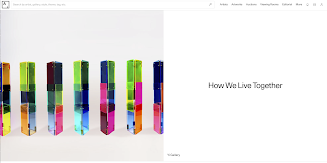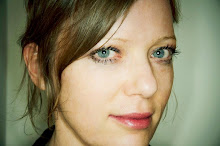VISIT HOW WE LIVE TOGETHER ON
Aug 16 - Sept 31, 2020
Anne Katrine Senstad
Using public art and architecture as vehicles to explore ideas of power,wealth,market,competition and dependence,Senstad addresses the search for personal liberation and satisfaction in our hyper-capitalist world.
Yi Gallery is pleased to reopen the Project Room with an exhibition of new works by Anne Katrine Senstad. "How We Live Together" examines the value systems and ethics that define citizenry and our common history, as well as speculates on how future generations will work together to shape our common destiny. Senstad uses text, installation and color interactions to cast light on the resurgent tribalism of our times.
The titular artwork, How We Live Together (2018), is a staple of the artist’s decades-long preoccupation with text displacement and the re-authoring of philosophical statements. The brushed gold, aluminium signage piece evokes public and private postmodern aesthetics of corporatism and the politics of financial power and wealth distribution. How We Live Together is the latest work from Senstad’s research project - Capitalism in the Public Realm - that she began in 2015 with a commissioned monumental sculpture, Gold Guides Me, for Triennale Brugge. Using public art and architecture as vehicles to explore ideas of power, wealth, market, competition and dependence, Senstad addresses the search for personal liberation and satisfaction in our hyper-capitalist world. Exchanging To with We in Roland Barthes’ text How To Live Together - from his 1977 lecture series on the notions of idiorrhythmic living through philosophy, literature, history and religion - the artist raises the question of how do we want to reshape our future, suggesting a philosophical and psychological shift in approach towards a potential integrated future. By proclaiming the communal We in How We Live Together, the artist suggests a shift from the politics of self to an all encompassing economy of we, where the narratives of time, nature and future generations are included.
The seven triangular structures combine the usage of utilitarian materials, such as bolts, door hinges and plexiglas, hinting at the ready-made, commerce, modernist architecture and advent of communication. This selection of materials further reflects on the artist’s association with the radical Bauhaus philosophy of uniting the arts through playful modification of everyday objects and utilitarianism. Though geometric and angular, the structure alludes to what Senstad calls a “human” circle, not unlike the integrated architecture of tribal and indigenous societies. Colors interact among the semi-transparent acrylic panels, reflecting and refracting variations of light. The symbiotic color composition transitions liminal space into a solid definition. An interlaced topology of compartments merges into wholeness. In Circle of Babel (2020), seven precisely arranged, multichromatic Plexiglas triangles form a circle of unity. Referencing numerous ancient mythological texts, most notably the biblical version of Genesis, the artist’s abstract Tower of Babel symbolizes the dispersing element of togetherness, where the city and the tower represent a control of the citizens, ruled by confusion and chastisement.
ART DAILY Exhibition Review HERE
THE YI GALLERY PANDEMIC EXHIBITION:
THE SOCIALLY DISTANCED EXHIBITION VISIT














